Sajjangarh Wildlife Sanctuary, located in Udaipur, is a beautiful natural haven that offers a rich experience for wildlife enthusiasts and nature lovers. Spread across the Aravalli hills, Sajjangarh Wildlife Sanctuary is home to a variety of flora and fauna, including deer, wild boars, panthers, and numerous bird species. The sanctuary is also known for its lush greenery and the iconic Monsoon Palace, offering stunning views of Udaipur. A visit to Sajjangarh Wildlife Sanctuary provides a peaceful escape and a chance to connect with nature in a serene setting.
Sajjangarh Wildlife Sanctuary Location
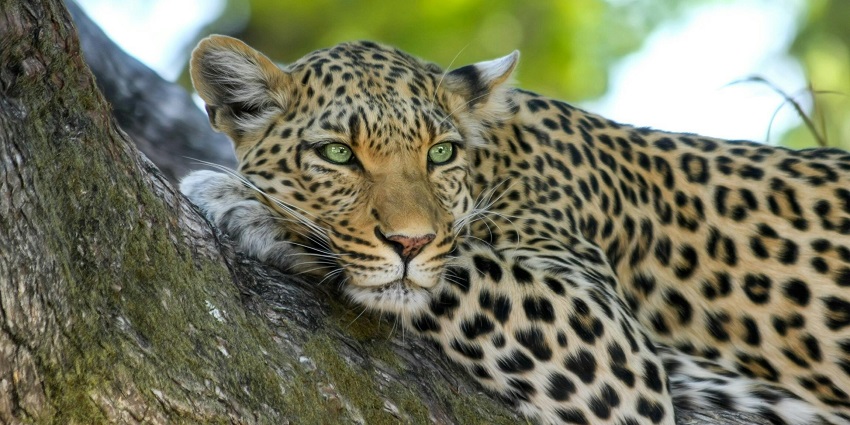
Photo: Pixabay / Pexels / Image For Representation Only
Sajjangarh Wildlife Sanctuary address lies in the Sajjangarh Palace complex. Nestled in the hills and forests surrounding Lake Pichola, the sanctuary offers a tranquil environment and rich biodiversity. It serves as a refuge for diverse wildlife species, providing a natural escape from the city. The sanctuary’s scenic beauty and peaceful setting, combined with its proximity to the historic palace, make it a popular destination for nature enthusiasts and wildlife lovers.
Suggested Read: Wildlife Sanctuaries In Udaipur
How To Reach Sajjangarh Wildlife Sanctuary
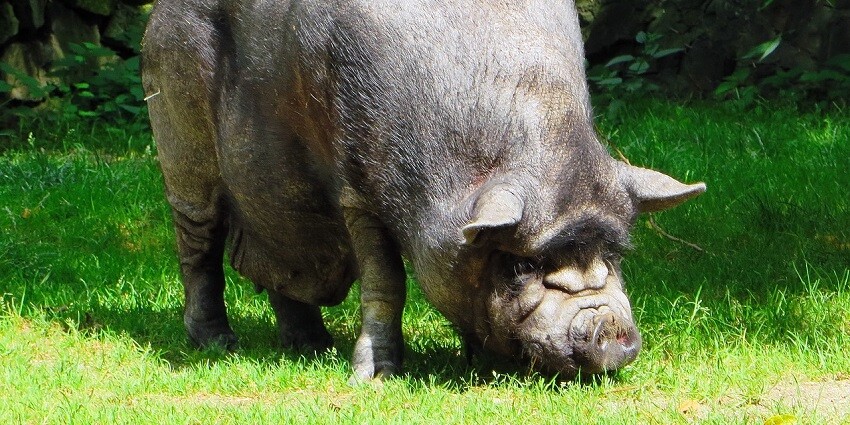
Photo: DEZALB / Pixabay / Image For Representation Only
By Air: The nearest airport to Sajjangarh Wildlife Sanctuary is Maharana Pratap Airport in Udaipur, approximately 30 kilometres away. From the airport, you can hire a taxi or use local transport to reach the sanctuary.
By Bus: Udaipur is well connected by road, with regular bus services from major cities in Rajasthan. Once in Udaipur, you can take a taxi or local transport to reach the sanctuary.
By Rail: Udaipur Railway Station is the closest railhead, located about 20 kilometres from the sanctuary. From the station, you can hire a cab or take a local bus to the sanctuary.
Places To Visit Near Sajjangarh Wildlife Sanctuary
There are a lot of interesting places to visit near Sajjangarh Wildlife Sanctuary, some of them are listed below:
1. Sajjangarh Palace
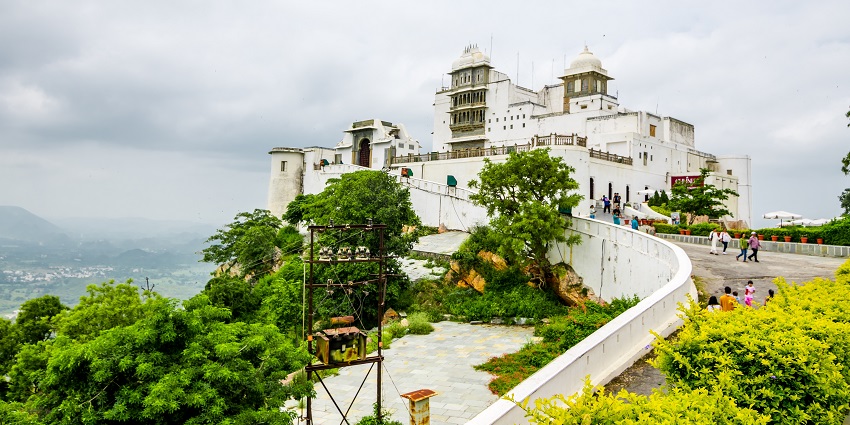
Photo: mrinalpal / Shutterstock
The Sajjangarh Palace, also known as Sajjangarh Fort, is situated on a hill that oversees Udaipur, Rajasthan, and its moniker is Monsoon Palace. In the year 1884, Maharana Sajjan Singh built this palace with the view to use it primarily as an astronomical centre. Later, it grew as a monsoon retreat and hunting lodge. It gives a marvellous panoramic view of Udaipur, its lakes, and the ranges of Aravalli Hills; basically, it is very famous for the view one gets at sunset. Indeed, this white marble structure possesses an aristocratic charm and reflects a feel of royal times past.
Timings: 9 AM – 6 PM
Entry Fee: ₹100 for Indians, ₹300 for foreign nationals
Suggested Read: Offbeat Places In Udaipur
2. Lake Pichola
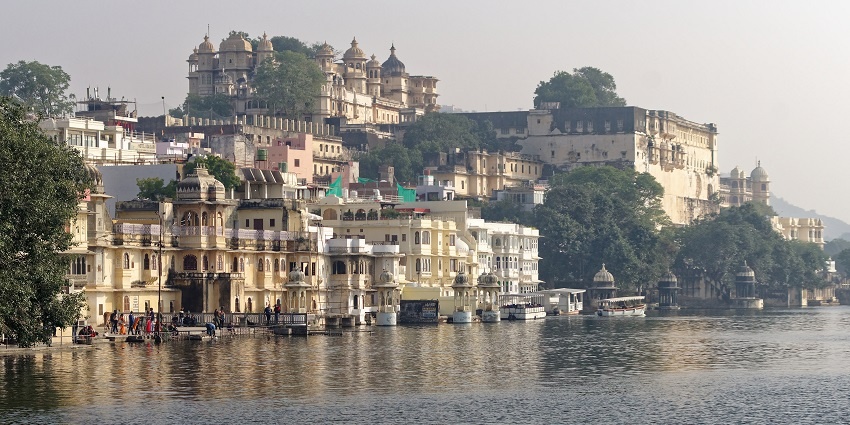
Photo: Jakub Hałun / Wikimedia Commons
Lake Pichola was built in 1362, and this is one of the most iconic and picture-postcard lakes in Udaipur. Maharana Udai Singh II extended this lake later. Some majestic palaces, temples, and ghats surround the lake, and it forms a perfect background to the “City of Lakes.” Two famous islands-Jag Niwas and Jag Mandir-house the luxurious Lake Palace and the historic Jag Mandir Palace, respectively. It has been considered ideal for boating, especially during sunset, when it provides a breathtaking view of the cityscape of Udaipur and the surroundings of the Aravalli Hills.
Timings: 9 AM – 6 PM
Cost/Person: ₹400 onwards (for boat rides)
3. Bagore Ki Haveli
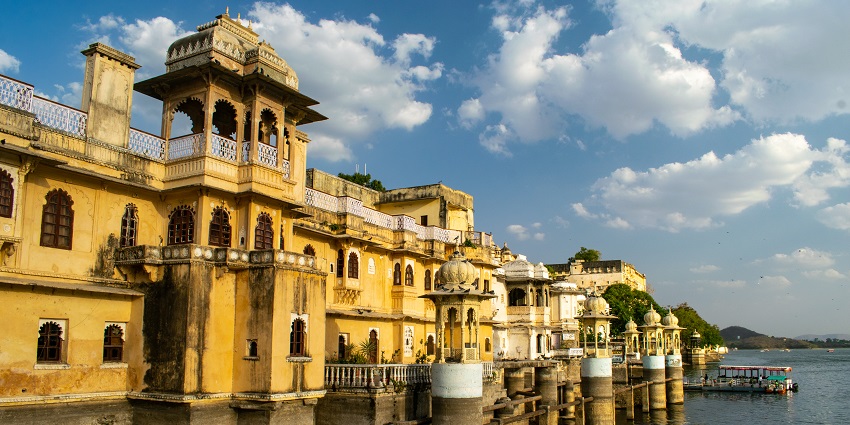
Photo: PraveenV / Pixabay / Image For Representation Only
Bagore Ki Haveli, located on the banks of Lake Pichola in Udaipur, is a grand 18th-century haveli built by Amir Chand Badwa, the Prime Minister of Mewar. Known for its intricate architecture and historic charm, the haveli boasts over 100 rooms adorned with period furnishings, traditional artwork, and royal artefacts. Its courtyards and balconies offer stunning views of the lake. Today, Bagore Ki Haveli is a museum showcasing Rajasthani culture and history. It also hosts the famous Dharohar Dance Show, a captivating evening performance of traditional folk dances and music, making it a cultural highlight of Udaipur.
Timings: 10 AM – 5:30 PM
Entry Fee: ₹60 (for Indians), ₹100 (for foreigners)
Suggested Read: Bagore Ki Haveli Museum
4. Jag Mandir
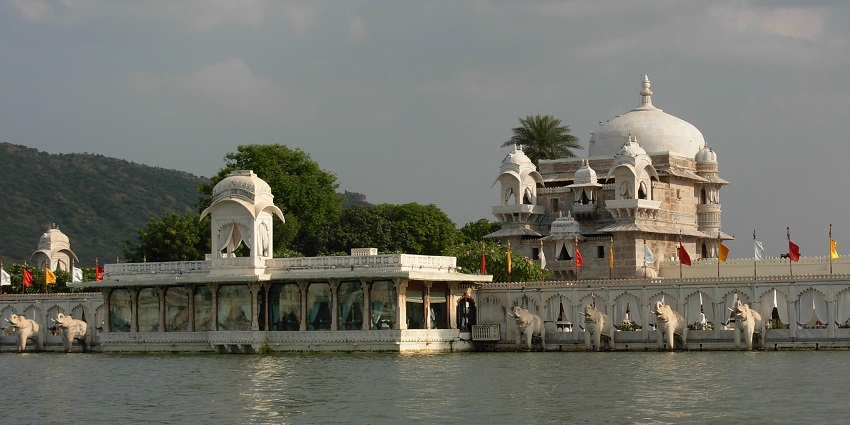
Photo: DeyaRoy / wikimedia commons
Jag Mandir, an exquisite island palace on Lake Pichola in Udaipur, Rajasthan, was constructed in the 17th century under the reign of Maharana Jagat Singh I. This serene marble structure, often referred to as the “Lake Garden Palace,” is known for its elegant design and picturesque setting. The palace features beautiful courtyards, stunning sculptures, and intricately carved marble panels. Its prominent location on the lake provides breathtaking views of the surrounding city and hills. Jag Mandir also served as a refuge for Shah Jahan, the Mughal emperor, during his rebellion against his father. Today, it is a popular tourist attraction and a venue for royal events.
Timings: 9 AM – 6 PM
Entry Fee: ₹100 (for Indians), ₹300 (for foreigners)
5. City Palace

Photo: suttirat wiriyanon / Shutterstock / Image For Representation Only
City Palace, Udaipur, Rajasthan, is an imposing complex of palaces that shows the lavish grandeur of the Mewar dynasty. Overlooking Lake Pichola, it was originally built by Maharana Udai Singh II in the 16th century but has been extended several times by successive rulers. The palace complex reflects both Rajasthani and Mughal architectural styles, with intricately delineated courtyards, balconies, towers, and gardens. Major attractions include Zenana Mahal, the Suraj Gokhada or ‘Sun Balcony’, and Peacock Courtyard. City Palace has a museum possessing huge collections of artifacts that are royal costumes, paintings, and weaponry, linked with the royal heritage of Udaipur.
Timings: 9:30 AM – 5:30 PM
Entry Fee: ₹300 (for Indians), ₹600 (for foreigners)
Suggested Read: Historic City Palace Museum
6. Fateh Sagar Lake
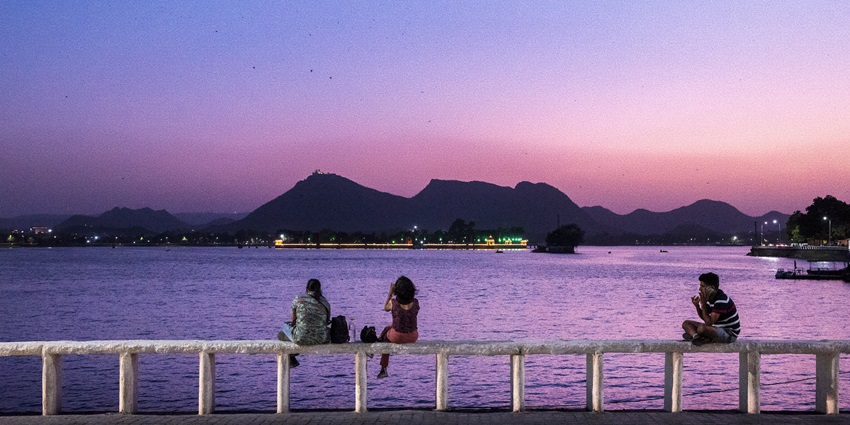
Photo: Ayushbhandari / Wikimedia Commons
Fateh Sagar is an artificial lake set against the Aravalli hills to the north of Lake Pichola. Built in the seventeenth century, it spans three main basins and offers calm waters for boating and evening strolls along its paved promenade. Small boats ferry visitors out to Nehru Park, an island garden planted with flowering trees and shaded seating. As the sun dips behind the hills, the water reflects soft pink and gold hues. Lakeside cafes serve chai and light snacks, making Fateh Sagar Lake one of the best places to visit in Udaipur.
Timings: 8 AM – 6 PM
Entry Fee: Free
7. Shilpgram
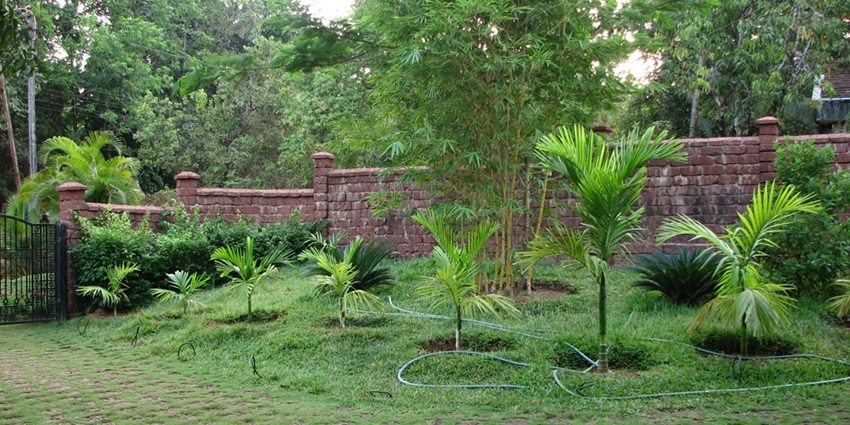
Photo: Nilesh2 str / Wikimedia Commons
Shilpgram is a living crafts village about 3 kilometres west of Udaipur. Modelled on traditional rural settlements, it features mud-walled huts, thatched cottages and open air workshops that showcase folk art from Rajasthan, Gujarat, Maharashtra and beyond. Visitors watch potters shape clay, weavers at hand-looms and painters at work on miniature scenes. Regular craft bazaars let you pick up embroidered textiles, lacquerware and silver jewellery directly from the artisans. A handful of simple cafés offer local snacks amid this pastoral setting, which contrasts beautifully with the city’s palaces and lakes.
Timings: 11 AM – 7 PM
Entry Fee: ₹30
Suggested Read: Popular Places To Visit Near Udaipur
8. Ambrai Ghat
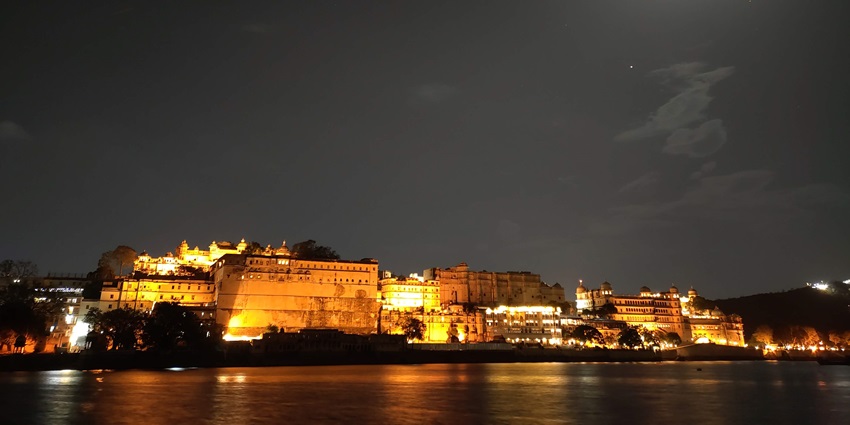
Photo: Imsourabh1996 / Wikimedia Commons
Ambrai Ghat sits on the northern shore of Lake Pichola and is famed for its views of the Jag Mandir island palace and the city’s palace complex across the water. A wide marble platform under a canopy of neem trees invites early-morning walkers and sunset watchers alike. Musicians often play classical melodies from portable stages, adding to the tranquil mood. Benches line the edge so visitors can linger over ice-cold lassis and fresh fruit juices sold by nearby stalls. Ambrai Ghat combines gentle lakeside calm with some of Udaipur’s finest water-view panoramas.
Timings: 24*7
Entry Fee: ₹10
9. Vintage And Classic Car Museum
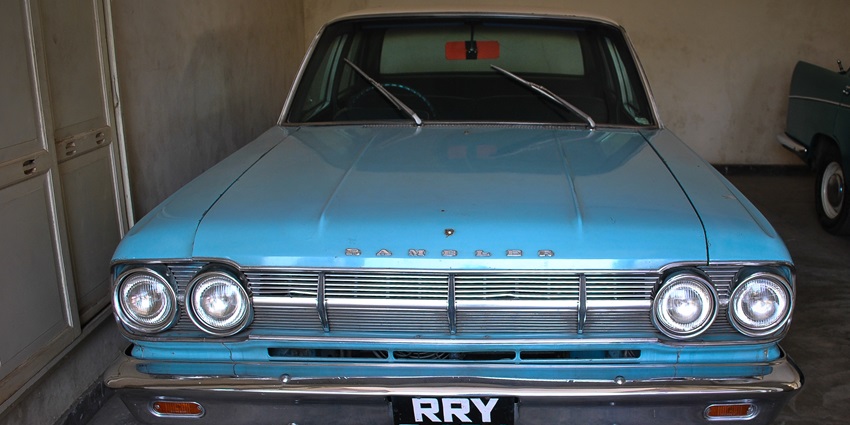
Photo: Schwiki / Wikimedia Commons
Housed in the former Mewar State Motor Garage near Gulab Bagh, the Vintage and Classic Car Museum displays about twenty elegantly restored vehicles once used by Udaipur’s maharajas. Highlights include four Rolls-Royces, two Cadillacs from the 1930s and a range of rare Mercedes models. Each car is accompanied by period photographs and stories of royal processions, weddings and state visits. The museum’s semicircular showroom and adjacent courtyard evoke the glamour of a bygone era. For motoring enthusiasts and history buffs alike, this collection offers a fascinating glimpse into Rajasthan’s royal lifestyle.
Timings: 9 AM – 9 PM
Entry Fee: ₹400
Suggested Read: Top Udaipur Museums
Where To Stay
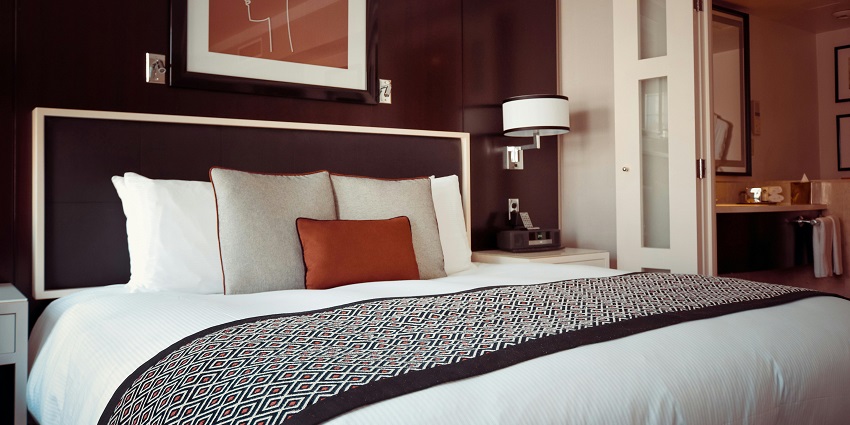
Photo: Pixabay / Pexels / Image for representation only
Accommodation near Sajjangarh Wildlife Sanctuary ranges from luxury resorts to budget guesthouses. Popular options include the Oberoi Udaivilas, Taj Lake Palace, and the Trident Udaipur, offering luxurious amenities and stunning views of the lake and surrounding hills. These hotels provide a lavish stay with top-notch facilities, including spa services, fine dining, and guided tours. For a more budget-friendly option, consider staying at local guesthouses or hotels in Udaipur city, which offer comfortable accommodations at affordable rates.
Where To Eat

Photo: StockImageFactory.com / Shutterstock / Image For Representation Only
Dining options near Sajjangarh Wildlife Sanctuary include a mix of local and international cuisine. Many hotels and resorts offer in-house dining with a variety of dishes, from traditional Rajasthani fare to continental cuisine. Popular restaurants in Udaipur include Ambrai, known for its Indian and continental dishes with views of Lake Pichola, and the Royal Repast, which offers a range of traditional Rajasthani delicacies. Local eateries and street food vendors in Udaipur also provide an authentic taste of regional flavors.
Suggested Read: Savour Street Food In Udaipur For Some Gastronomic Delights
Best Time To Visit
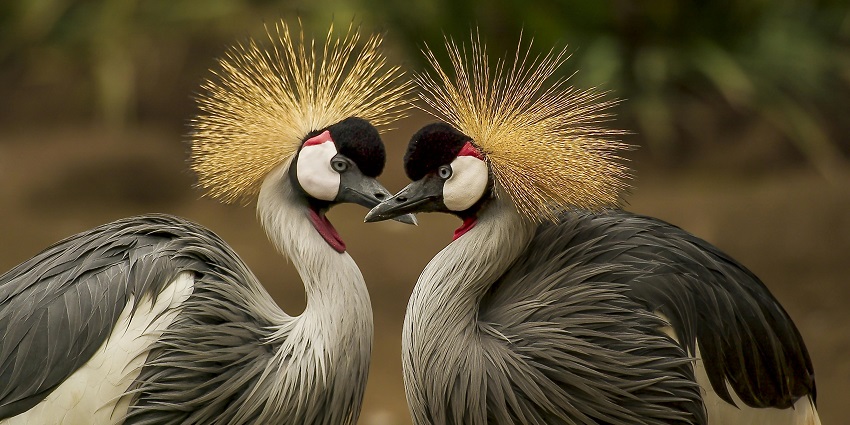
Photo: Pixabay / Pexels / Image For Representation Only
The best time to visit Sajjangarh Wildlife Sanctuary is from October to March. During these months, the weather is pleasant and cool, making it ideal for wildlife sightings and outdoor activities. The temperatures are comfortable, and the risk of rain is minimal, allowing visitors to fully enjoy the sanctuary and its surroundings. The sanctuary is generally closed during the monsoon season from June to September due to heavy rains, which can make the roads difficult to traverse.
Other Things To Consider
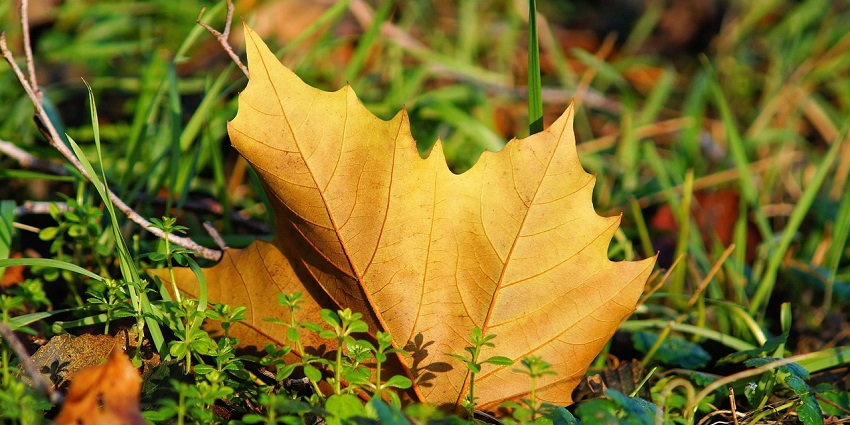
Photo: Kapa65 / Pixabay / Image For Representation Only
Average Cost Of The Trip
A typical trip to Sajjangarh Wildlife Sanctuary can cost between ₹10,000 to ₹20,000 per person, depending on your choice of accommodation, dining, and activities. Luxury stays and guided tours can increase the overall cost, while budget options and self-guided tours can help manage expenses. Be sure to factor in costs for travel, entry fees, and any additional activities you plan to undertake. Also, confirm the Sajjangarh Wildlife Sanctuary ticket price before visiting.
Tips For Travellers
- Ensure you book your accommodation and safari slots well in advance.
- Confirm Sajjangarh Wildlife Sanctuary timing as it can change depending on the climate or other factors.
- Bring comfortable clothing, a hat, and sunscreen to protect yourself from the sun.
- Follow all guidelines and regulations while visiting the sanctuary.
- Carry sufficient water and stay hydrated during the trip.
Suggested Read: Top Wildlife Sanctuaries In Rajasthan For A Wild Adventure
Sajjangarh Wildlife Sanctuary is a perfect retreat for nature lovers, offering a serene environment amidst the Aravalli hills and diverse wildlife. Whether you’re trekking through its green landscapes or spotting various animal species, a visit to Sajjangarh Wildlife Sanctuary is an enriching experience. Plan your next trip with TripXL and enjoy the peace and natural beauty of this beautiful sanctuary.
Cover Photo: colfelly / Pixabay / Image For Representation Only


 WhatsApp
WhatsApp
 Twitter
Twitter









